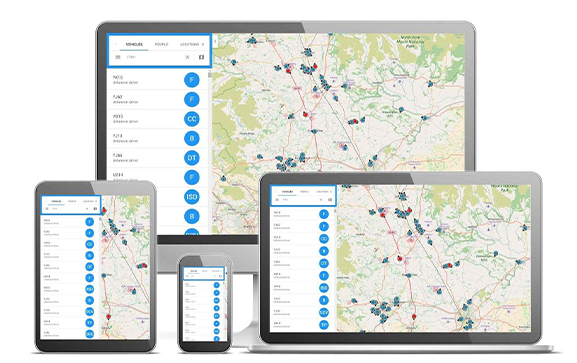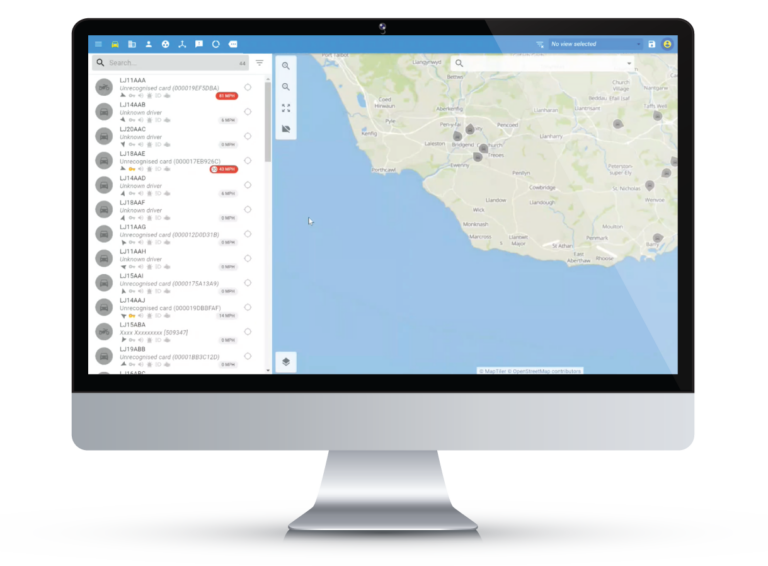Leveraging Data Management to Optimise EV Charging Infrastructure for Emergency Service Fleet Operators
9 August 2023
In the dynamic landscape of electric vehicles (EVs), fleet operators in the emergency services sector are at the forefront of adopting sustainable transportation solutions. With the critical nature of their operations, ensuring an efficient and reliable charging infrastructure is paramount. Better data management can revolutionise how emergency service fleet operators approach EV charging. By harnessing data, these operators can enhance the charging experience, strategically plan infrastructure deployment, tackle data sharing challenges, and ultimately reduce downtime while streamlining maintenance. In this blog, we will explore how data-driven solutions can empower emergency service fleet operators to embrace the electric future more effectively.
Optimising the Charging Experience with Data
For emergency service fleet operators, time is of the essence. Leveraging data management can significantly enhance the charging experience for EVs in their fleets. By carefully analysing charging data, operators can identify peak usage periods and establish charging schedules that minimise wait times and optimise vehicle availability, as well as aligning to operational priorities.
Understanding usage patterns also helps operators identify high-traffic charging locations, enabling them to strategically deploy additional charging infrastructure to meet fleet requirements. Ultimately, this data-driven approach ensures that EVs are charged efficiently, maximising their readiness for emergency responses.


Strategic Infrastructure Planning with Advanced Tools
Effective planning is vital when deploying EV charging infrastructure for emergency service fleets. By embracing the latest tools and technologies, operators can make data-driven decisions that optimise resource allocation. Geo-fencing data can be employed to analyse traffic patterns, emergency call data, and vehicle usage to identify ideal charging station locations. Strategic placement of charging stations reduces the time taken to reach charging points during critical operations, minimise operational downtime so enabling smoother operations for the emergency service fleet.
Addressing Data Sharing Challenges with Common Data Standards
The challenge of data sharing in the EV charging ecosystem is particularly significant for emergency service fleet operators. The need for easy communication between different charging stations is critical during urgent situations. Common data standards are vital to enable seamless data sharing and communication between charging stations and fleet management systems. By embracing industry-wide data standards, fleet operators can ensure that their EVs have access to real-time charging station availability information, facilitating efficient charging and enabling effective coordination during emergency deployments.
Enhancing Uptime and Streamlining Maintenance through Data Management
Downtime can be highly disruptive for emergency service fleet operators. However, data analysis and efficient data management offer solutions to reduce downtime and enhance overall fleet availability. By actively monitoring charging station data, fleet operators can proactively identify potential technical issues. Predictive analytics can forecast maintenance requirements, enabling operators to schedule preventive maintenance and reduce the risk of unplanned downtime. Real-time monitoring facilitates immediate responses to any charging station issues, ensuring uninterrupted EV availability for emergency operations.
Empowering Data-Driven Efficiency with Telematics Technology
Telematics technology holds the key to revolutionising data management for emergency service fleet operators in the context of EV charging infrastructure. Telematics systems, integrated into EVs, gather and transmit crucial data in real-time, providing fleet operators with invaluable insights into vehicle performance, location, and charging status. By harnessing telematics data, fleet operators can optimise charging schedules based on vehicle usage patterns, driver behaviour, and operational demands.
Telematics also enable remote monitoring of charging stations and EV’s status, allowing operators to detect potential issues promptly and take preventive actions, minimising downtime and increasing uptime. Furthermore, the integration of telematics data with advanced analytics platforms enhances predictive maintenance capabilities, enabling operators to proactively address maintenance requirements and optimise fleet readiness. With telematics as a solution for better data management, emergency service fleet operators can efficiently navigate the EV charging landscape, ensuring seamless operations and swift responses to emergencies across the UK.

Optimising EV charging infrastructure through data management is pivotal for emergency fleet operators to meet the demands of critical operations. Leveraging data empowers fleet operators to enhance the charging experience, strategically plan infrastructure deployment, tackle data sharing challenges, and reduce downtime while streamlining maintenance. By embracing data-driven solutions, emergency service fleet operators can ensure that their EVs are always ready to respond swiftly to emergencies, contributing to a greener, more sustainable and resilient emergency services sector in the UK.
Want more information?
Get in touch today to find out how you can make your officers more productive.
Contact Us